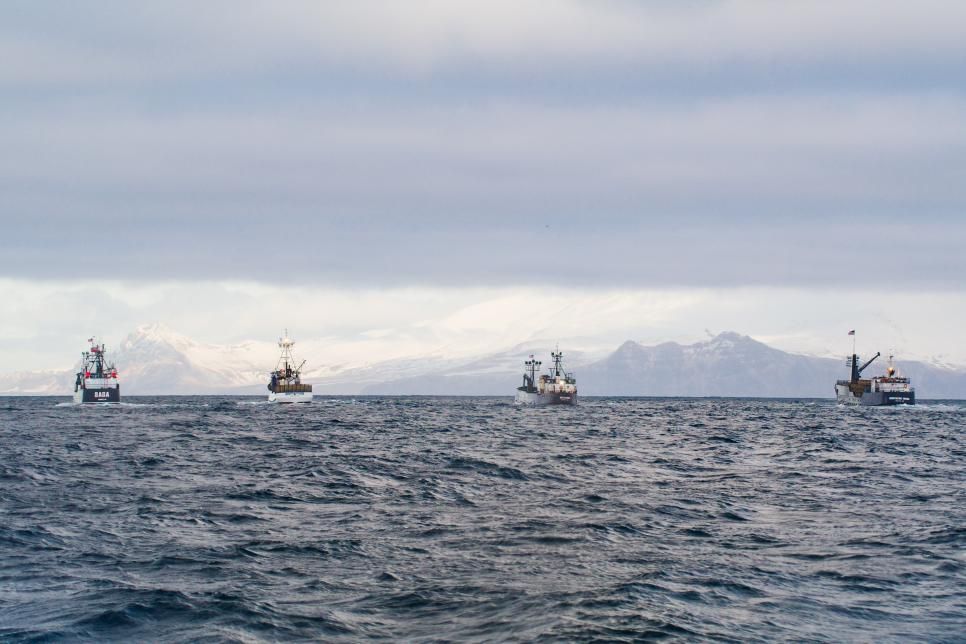Enjoying Outside, Inside - TV Shows That Make you Glad you're Enjoying Outside, Inside

Boats from "Deadliest Catch" (photo by Shane Moore)
Once again we’re trying to avoid contact with too many people (sigh) and my family has been catching up on our recorded television library. A lot of the shows we watch are outdoor reality shows that involve mining for gold, crab fishing or surviving in the elements. I feel like I’m always complaining about being cold and watching shows that take place outside, in cold weather, snow or near icy water make me so glad that I’m inside under a blanket.
One of our guilty pleasure shows is “Deadliest Catch”. The series has been on since my daughter was a little girl and is the process of filming their 17th season. The show follows several crab fishing vessels and their crews on the icy Bering Sea during the King and Opilio crab seasons. The fishermen work long shifts hauling massive equipment around the wet, icy deck while dealing with bitter Alaskan winters, biting wind and pounding waves with water temperatures below freezing.
Another outdoor reality show that makes me glad to be watching from my cozy sofa is “Gold Rush”. A long-running reality series that takes place in the Klondike region of Dawson City, Yukon, Canada. Mining crews live in heated mobile homes onsite but have to deal with frozen ground and frigid temperatures. Sometimes the equipment even freezes up. Some of the mining crews are family, some of them are long-time friends but almost every crew has a wooly-coated dog in the cab of at least one of their excavators or pickup trucks. Although deemed essential workers by the Canadian government, most of the mining crews had to quarantine for two weeks at the beginning of the filming season in 2020. Some of the crews even took on filming themselves as the film crews were not allowed back into Canada in time for the season to kick off.
Another show that makes me shiver is “Gold Rush, White Water”; a reality series where crews mine for gold in fast moving McKinley Creek, Haines Borough, Alaska. The crews stay at a base camp and have to zip line to their work area on the banks of McKinley Creek. They wear dive suits that use circulated heated water to keep them from freezing while they’re under water using suction to pull gold and rocks from the whitewater collection pools at the bottom of the creek. Sometimes they have to use dynamite to break up huge overhanging boulders called “widow makers”. The source of McKinley Creek is a glacier and the high temperature expected this week is 23 degrees Fahrenheit. So yeah, brrrrrrr.
Another show that I’ve only seen bits of is “Alaskan Bush People”. The show is about the Brown family that moved to Alaska long ago and uses unconventional wisdom to survive in the tundra. Filmed in Hoonah, Alaska and Chichagof Island in the Alaskan panhandle, they often have to trek through feet of snow to hunt for their food and find wood to heat their hand-constructed home. The family has faced many trials such as their boat sinking and the loss of their father in addition to the weather, but that alone is enough to keep me inside.
-Kristie Ehrhardt; kehrhardt@tuleyome.org
Tuleyome Land Conservation Program Manager
RECENT ARTICLES






